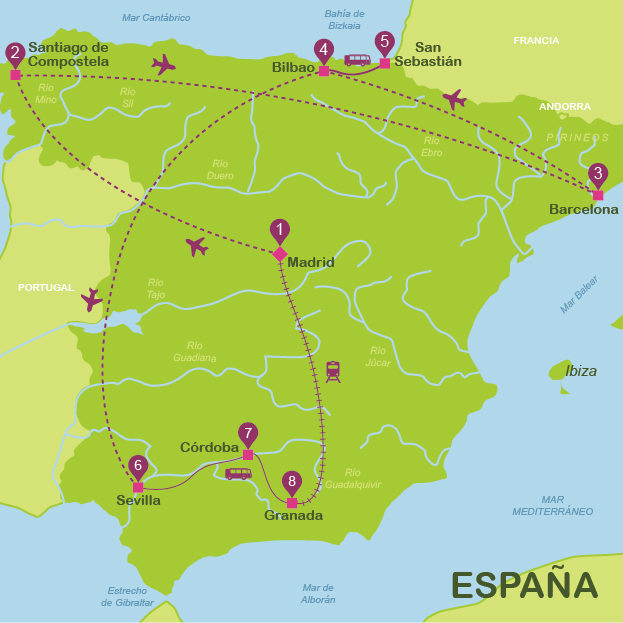
Continue on Rúa das Ameas until Praza de Santiago Agostiño. From here, head towards Praza da Pescadería Vella and then Praza de Cervantes. The latter square was known in the 12th century as the forum, as it was a popular meeting point and place where the herald read municipal agreements and ordinances of the archbishop (for this reason, one of its streets is named "Calle del Preguntoiro"). A bust of Miguel de Cervantes, author of Don Quixote, sits atop the fountain.
Continue on Calle Acibechería until you come to the Cathedral. Walk all the way around the Cathedral to see its various squares:
- Praza da Inmaculada: Framed between the San Martiño Pinario monastery and the cathedral facade on Calle Azabachería, it owes its name to the workshops devoted to the carving of jet. The final city section of the French, English and Northern routes of St. James' Way, which enter the historic quarter through the gate called "Puerta del Camino", leads here.
- Praza das Praterías: This square owes its name to the goldsmith and silversmith workshops situated in the low areas of the cloister since the Middle Ages and is presided over by the only Romanesque facade of the Cathedral still standing. Note the 72-metre Clock Tower, which is visible from anywhere in the city.
- Praza da Quintana: A set of stairs divides this majestic yet restrained square into two different spaces: Quintana de Vivos (Quintana of the Living) and Quintana de Mortos (Quintana of the Dead) (it was a burial ground until 1780, when for health reasons and lack of space another cemetery was chosen). In this square you'll find the Puerta Santa (Holy Gate) of the Cathedral, which is opened only for Holy Year. Entering through it, the jubilee indulgence can be earned. The imposing wall of the San Paio de Antealtares monastery fixes the boundary of the complex on the other side.

